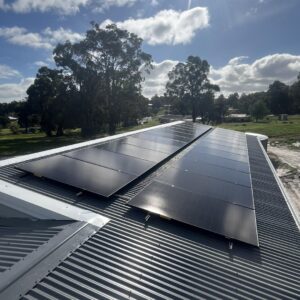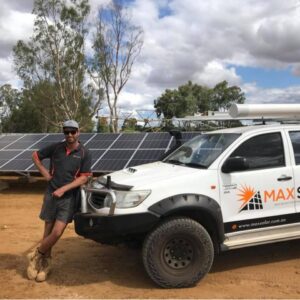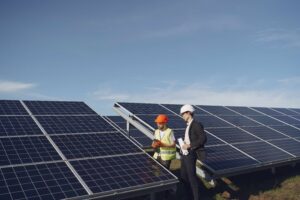As solar energy adoption grows across Western Australia, many home and business owners are asking when the right time is to upgrade their solar system. The Solar System landscape is evolving rapidly, and 2025 promises significant innovations in panel efficiency, battery storage, and smart monitoring technologies. Understanding these trends can help users maximise returns, reduce energy costs, and future-proof their systems.
For homeowners and businesses in WA, deciding whether to upgrade is more than a matter of replacing old equipment. It involves evaluating the latest advancements, considering potential savings, and ensuring systems remain compatible with emerging technology standards. In this article, we break down the critical factors, emerging technologies, and practical checklists to help you make informed decisions.
Why Upgrading Your Solar System Matters
Many existing systems installed five or more years ago may still function but are likely underperforming compared to modern setups. Solar technology evolves fast, and the new solar tech 2025 includes:
1.Higher efficiency solar panels
2. Smart inverters with enhanced energy management
3. Longer-lasting, high-capacity batteries
4. Integrated monitoring and analytics tools
Upgrading can improve energy yield, reduce utility costs, and extend system life. But timing is crucial. Upgrading too early may be unnecessary, while delaying can result in missed savings and lost efficiency.
For guidance on system upgrades and installation, you can check solar panel system services for expert advice and current technology options.
Key Indicators That You Should Upgrade Your Solar System
Several signs indicate it may be time to consider an upgrade. These include:
1. Reduced Energy Output: Panels naturally degrade over time. A noticeable drop in output, even with clean panels, can signal the need for replacements.
2. Old Inverter Technology: Inverters often last 10-15 years. Older models lack efficiency improvements and smart features.
3. Battery Limitations: If your system cannot store sufficient energy or relies on outdated technology, modern batteries can dramatically enhance off-grid reliability.
4. Energy Goals: As your household or business energy needs grow, your existing system may no longer meet demands.
5. Financial Viability: If a new system or component offers a faster return on investment (ROI) than continuing with the old one, upgrading becomes cost-effective.
A structured ROI checklist can help quantify whether the upgrade is worthwhile. This checklist should include upfront costs, expected energy savings, lifespan extension, and potential incentives.
Technology Trends for 2025
With new solar tech 2025 on the horizon, upgrading your system can provide long-term benefits. Here are the key trends:
1. Panel Efficiency Improvements
Modern solar panels now exceed 23% efficiency, a significant increase over older models averaging 15-18%. Higher efficiency panels:
1.Capture more sunlight in limited roof space
2. Improve energy yield during low-light conditions
3.Provide faster ROI for both home and business systems
For users considering replacing panels, understanding efficiency ratings and warranty periods is essential.
2. Inverter Upgrades
Inverters are the brain of a solar system. Advances include:
1.Smart inverters: Enable better load management, peak shaving, and grid interaction
2. Hybrid models: Integrate seamlessly with battery storage
3. Remote diagnostics: Allow real-time monitoring and reduce maintenance downtime
Upgrading your inverter can unlock performance gains even without replacing panels, making it a cost-effective starting point for many WA solar users.
3. Battery Improvements
Battery technology continues to evolve with lithium-ion and other chemistries providing:
1. Longer lifespans
2. Higher storage capacities
3.Faster charge and discharge rates
Improved batteries support off-grid living, peak shaving, and energy independence, making them particularly attractive for areas with variable electricity prices.
For guidance on modern storage options and integration with existing setups, MaxSolar’s solutions provide detailed insights.
4. Smart Monitoring Systems
Smart monitoring is no longer optional. Advanced monitoring tools allow:
1.Real-time energy consumption tracking
2.Alerts for system faults or performance drops
3.Detailed reports to support ROI calculations
Integrating smart monitoring with inverter and battery upgrades ensures that users can optimise energy usage and maximise savings.
5. Off-Grid Advances
Off-grid solutions are increasingly viable for remote WA properties. Key trends include:
1.Solar-battery hybrids designed for self-sufficient systems
2.Scalable modular storage solutions
3.Automated energy management to balance demand and generation
These advances make off-grid living more practical while reducing reliance on unstable or costly grid connections.
Evaluating Upgrade Costs and ROI
Before upgrading, a careful assessment of costs and potential benefits is crucial. Consider creating a table to compare your current system with proposed upgrades.
| Component | Current System | Upgrade Option | Expected Benefit |
|---|---|---|---|
| Solar Panels | 15–18% efficiency | 22–23% efficiency panels | Higher energy output |
| Inverter | 5–7 years old | Smart hybrid inverter | Better load management, remote monitoring |
| Battery | Limited capacity | High-capacity lithium-ion | More storage, peak shaving |
| Monitoring | Basic or none | Smart analytics | Performance tracking, alerts |
| ROI | Medium | High | Faster payback, reduced bills |
Calculating ROI involves factoring in:
1.Cost of new equipment and installation
2.Government rebates or incentives
3.Expected savings on electricity bills
4.Extended system life
This structured approach ensures that your decision is financially sound and technologically forward-looking.
Local Considerations for WA Users
In Western Australia, solar users should consider:
1.Local climate and solar irradiance for panel efficiency
2.Energy tariffs and grid interaction
3.Available government incentives for renewable energy upgrades
WA’s sunny conditions make solar a smart long-term investment, and staying up-to-date with 2025 trends ensures maximum efficiency and savings.
Practical Upgrade Checklist
To simplify decision-making, use the following checklist:
1. Assess panel age and efficiency
2.Check inverter performance and compatibility
3.Evaluate battery capacity and health
4.Review energy consumption trends
5.Compare ROI estimates with upgrade costs
6.Factor in incentives, rebates, and future energy needs
7.Consider smart monitoring or automation for better control
Following this checklist helps ensure that your upgrade decision is informed, practical, and financially sound.
Conclusion
Upgrading your solar system in WA is no longer just about replacing old panels. With new solar tech 2025, homeowners and businesses can take advantage of higher efficiency, smart inverters, advanced batteries, and off-grid innovations. By carefully assessing your current system, calculating ROI, and considering local energy conditions, you can ensure that your system is future-proof, cost-effective, and capable of meeting growing energy demands.
For more information on solar panel systems, installation, and technology options, visit solar panel services to explore solutions suitable for your needs.
Frequently Asked Questions
How do I know if it is time to upgrade my solar system in WA?
Look for declining energy output, outdated inverters, limited battery storage, increased energy needs, or a favourable ROI on new technology.
What new solar tech is available in 2025?
Technologies include high-efficiency panels, smart hybrid inverters, advanced batteries, smart monitoring, and off-grid energy management systems.
Can I upgrade just part of my solar system?
Yes. Upgrading components like inverters or batteries can improve performance without replacing panels, offering cost-effective options.
How do I calculate the ROI for a solar upgrade?
Consider equipment and installation costs, energy savings, incentives, system lifespan, and potential utility rate changes to estimate ROI.
Are there government incentives for solar upgrades in WA?
Yes, WA offers rebates and incentives that may reduce upfront costs and improve payback periods. Check with local authorities or solar providers.








